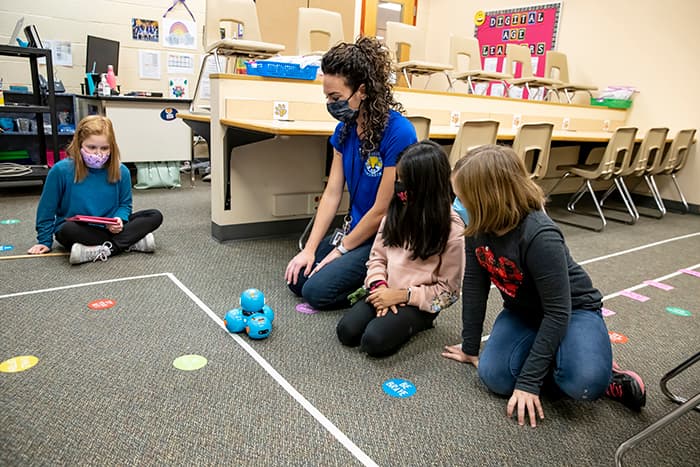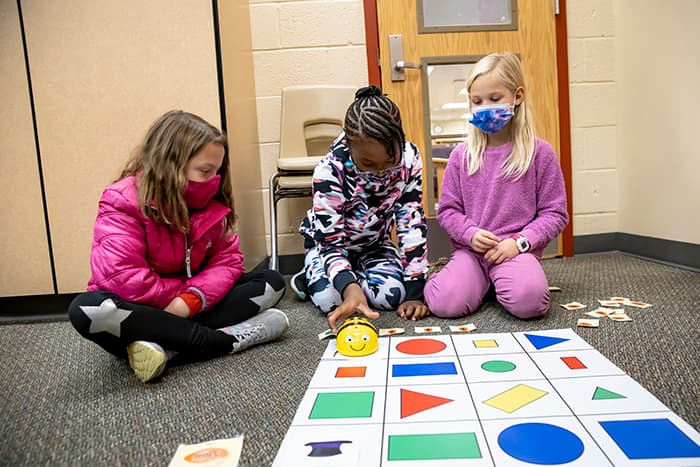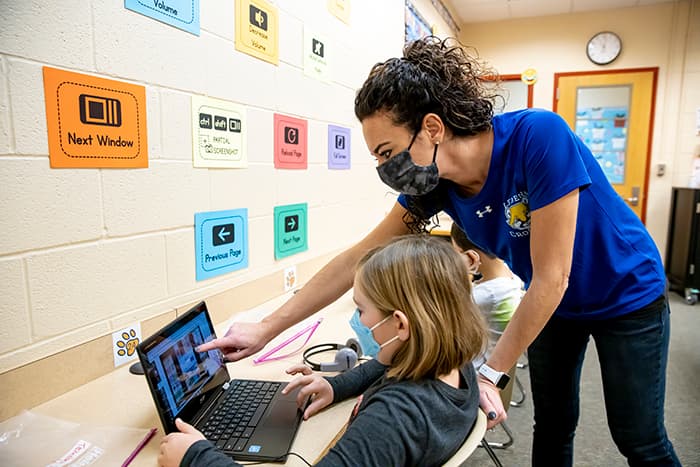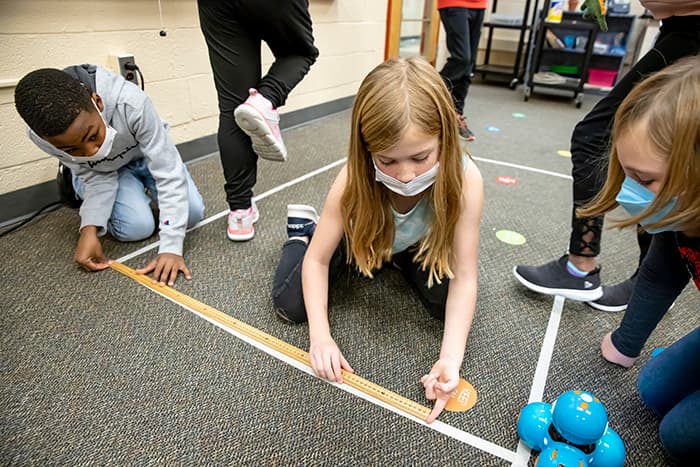Clemens Crossing ES Students Celebrate Hour of Code
January 5th, 2022
It has been six years since Clemens Crossing Elementary School Instructional Technology Teacher Rachel Gelinas began having her students participate in the Hour of Code, an annual event during which students around the world spend one hour engaging in coding activities that help broaden their understanding of computer science.
Each year, Gelinas’ decision to participate in the Hour of Code has been met with a similar reaction: her students cheering.
There are many reasons for that enthusiasm, Gelinas says. But it starts with hands-on learning.
During the Hour of Code, Gelinas’ students have the opportunity to participate in a series of activities, including online coding games, developing simple algorithms, and using applications to create coding “blocks” to move robots around in various ways.
“The students get so excited when they see the robots doing what they programmed them to do. It helps them to see the real-life impact of coding and gets them thinking about what else they might be able to program things to do,” Gelinas says.
At the same time, the Hour of Code activities help students to realize that coding is a skill that anyone can learn.
“One of the big goals of the Hour of Code is to debunk the idea that computer science is something that only certain people can do,” Gelinas says. “We help the students to see that if they are willing to work hard, get creative, and try new things, coding is definitely something they can learn to do.”
The Hour of Code activities also create opportunities for students who may face challenges in other academic areas to shine.
“When we challenge students to solve a problem through programming, we tap into talents and skills that they may not have had the chance to demonstrate in other contexts. We’re giving them a space to stand out and build confidence in themselves,” Gelinas explains.
In addition, the Hour of Code helps students make what Gelinas calls “a global connection to coding.”
“In Howard County, we teach computer science to elementary school students throughout the school year. By participating in the Hour of Code, which involves students from all over the world, we help our students to understand that they are part of a global community with a shared interest in computer science.”
The Hour of Code also helps prompt classroom discussions about career opportunities in computer science and the growing need for coding skills, Gelinas says.
“So much of our lives these days is driven by computers and technology. By exposing students at a young age to the basic skills and concepts that are used to build those tools, we are helping to equip them to navigate the world now and in the future–and to have a lot of fun in the process.”
 HCPSS
HCPSS


